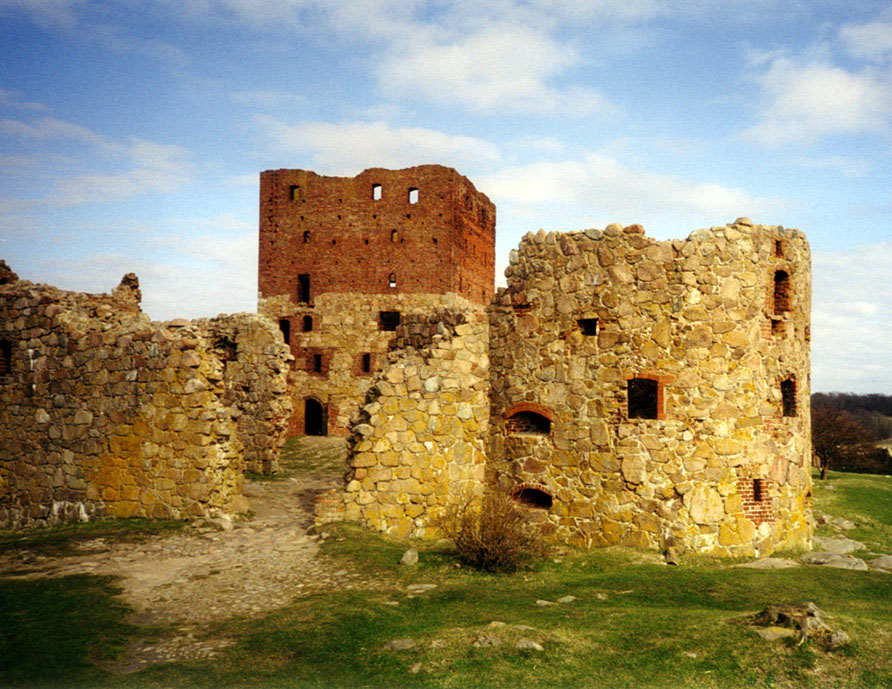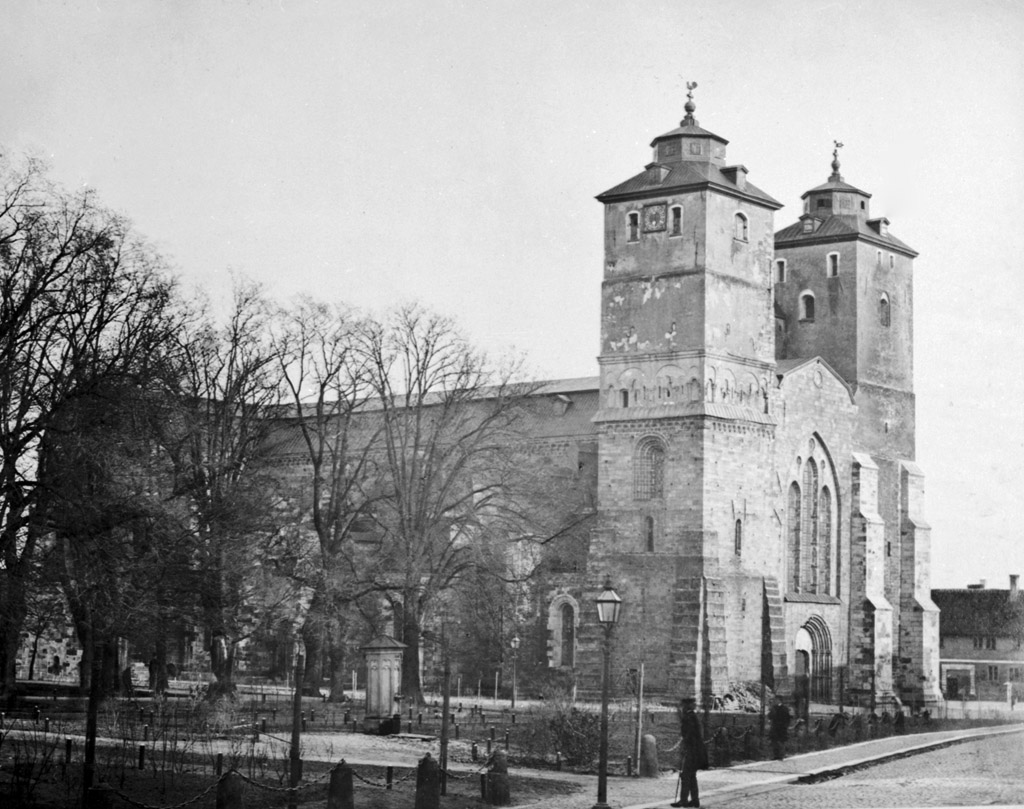|
Listed, Bornholm
Listed is a little fishing village on the Danish island of Bornholm, northwest of Svaneke. As of 2015, it has a population of 217. Fishermen have used the harbour since at least 1379."Listed" ''Den Store Danske''. Retrieved 10 November 2012. Etymology Listed comes from Old Danish "lista" which meant "strip" or "edge". It denotes the narrow strip of land along the coast below the hills to the south."Listed"''På 367 ture i Bornholms natur''. Retrieved 9 November 2012. History The place is first documented in 1379 when the |
Bornholm
Bornholm () is a Danish island in the Baltic Sea, to the east of the rest of Denmark, south of Sweden, northeast of Germany and north of Poland. Strategically located, Bornholm has been fought over for centuries. It has usually been ruled by Denmark, but also by Sweden and by Lübeck. The ruin of Hammershus, at the northwestern tip of the island, is the largest medieval fortress in northern Europe, testament to the importance of its location. Bornholm and Ertholmene comprise the last remaining Danish territory in Skåneland east of Øresund, having been surrendered to Sweden in 1658, but regained by Denmark in 1660 after a local revolt. The island is known as ("sunshine island") because of its weather and ("rock island") because of its geology, which consists of granite, except along the southern coast. The heat from the summer is stored in the rock formations and the weather is quite warm until October. As a result of the climate, a local variety of the common fig, k ... [...More Info...] [...Related Items...] OR: [Wikipedia] [Google] [Baidu] |
Denmark
) , song = ( en, "King Christian stood by the lofty mast") , song_type = National and royal anthem , image_map = EU-Denmark.svg , map_caption = , subdivision_type = Sovereign state , subdivision_name = Kingdom of Denmark , established_title = Consolidation , established_date = 8th century , established_title2 = Christianization , established_date2 = 965 , established_title3 = , established_date3 = 5 June 1849 , established_title4 = Faroese home rule , established_date4 = 24 March 1948 , established_title5 = EEC accession , established_date5 = 1 January 1973 , established_title6 = Greenlandic home rule , established_date6 = 1 May 1979 , official_languages = Danish , languages_type = Regional languages , languages_sub = yes , languages = GermanGerman is recognised as a protected minority language in the South Jutland area of Denmark. , demonym = , capital = Copenhagen , largest_city = capital , coordinates = , ethnic_groups = , ethnic_gro ... [...More Info...] [...Related Items...] OR: [Wikipedia] [Google] [Baidu] |
Regions Of Denmark
The five Regions of Denmark ( da, regioner) were created as administrative entities at a level above the municipalities and below the central government in the public sector as part of the 2007 Danish Municipal Reform, when the 13 counties ('' amter'') were abolished. At the same time, the number of municipalities ('' kommuner'') was cut from 270 to 98. The reform was approved and made into a law by the lawmakers in the Folketing 26 June 2005 with elections to the 98 municipalities and 5 regions being held Tuesday 15 November 2005. Each region is governed by a popularly elected regional council with 41 members, from whom the regional chairperson is chosen. The main responsibility of the regions is healthcare. Lesser powers of the regions include public transport, environmental planning, soil pollution management and some coordination of secondary education. In contrast to the former counties (1970–2006), the regions do not have municipal powers. Regions cannot levy tax ... [...More Info...] [...Related Items...] OR: [Wikipedia] [Google] [Baidu] |
Capital Region Of Denmark
The Capital Region of Denmark ( da, Region Hovedstaden, ) is the easternmost administrative region of Denmark. The Capital Region has 29 municipalities and a regional council consisting of 41 elected members. As of 1 August 2021 the chairperson is Lars Gaardhøj, who is a member of the Social Democrats party of Denmark. The Capital Region was established on 1 January 2007 as part of the 2007 Danish Municipal Reform. This reform abolished the traditional counties (Danish plural: , singular: ) and created five regions. As part of this reform 271 smaller municipalities were merged into larger units reducing the number of municipalities to 98. The reform dramatically diminished the power of regional governments while enhancing that of local government and that of the central government in Copenhagen. It was implemented on 1 January 2007. Unlike the former counties (1970–2006) (Danish ', literally 'county municipality') the regions are not municipalities and are thus not all ... [...More Info...] [...Related Items...] OR: [Wikipedia] [Google] [Baidu] |
Municipalities Of Denmark
Denmark is divided into five regions, which contain 98 municipalities ( da, kommuner , sing.: ). The Capital Region has 29 municipalities, Southern Denmark 22, Central Denmark 19, Zealand 17 and North Denmark 11. This structure was established per an administrative reform (Danish: ''Strukturreformen''; English: (''The'') ''Structural Reform'') of the public sector of Denmark, effective 26 June 2005 (council elections 15 November 2005), which abolished the 13 counties (; singular ) and created five regions (; singular ) which unlike the counties (1970–2006) (Danish (singular) ''amtskommune'' ) are not municipalities. The 270 municipalities were consolidated into 98 larger units, most of which have at least 20,000 inhabitants. 67 of the present municipalities are mergers as a result of the administrative reform, with Ærø being allowed to merge already on 1 January 2006, and one municipality, Bornholm Regional Municipality, being a merger from 1 January 2003, before t ... [...More Info...] [...Related Items...] OR: [Wikipedia] [Google] [Baidu] |
Central European Time
Central European Time (CET) is a standard time which is 1 hour ahead of Coordinated Universal Time (UTC). The time offset from UTC can be written as UTC+01:00. It is used in most parts of Europe and in a few North African countries. CET is also known as Middle European Time (MET, German: MEZ) and by colloquial names such as Amsterdam Time, Berlin Time, Brussels Time, Madrid Time, Paris Time, Rome Time, Warsaw Time or even Romance Standard Time (RST). The 15th meridian east is the central axis for UTC+01:00 in the world system of time zones. As of 2011, all member states of the European Union observe summer time (daylight saving time), from the last Sunday in March to the last Sunday in October. States within the CET area switch to Central European Summer Time (CEST, UTC+02:00) for the summer. In Africa, UTC+01:00 is called West Africa Time (WAT), where it is used by several countries, year round. Algeria, Morocco, and Tunisia also refer to it as ''Central E ... [...More Info...] [...Related Items...] OR: [Wikipedia] [Google] [Baidu] |
Central European Summer Time
Central European Summer Time (CEST), sometimes referred to as Central European Daylight Time (CEDT), is the standard clock time observed during the period of summer daylight-saving in those European countries which observe Central European Time (CET; UTC+01:00) during the other part of the year. It corresponds to UTC+02:00, which makes it the same as Eastern European Time, Central Africa Time, South African Standard Time, Egypt Standard Time and Kaliningrad Time in Russia. Names Other names which have been applied to Central European Summer Time are Middle European Summer Time (MEST), Central European Daylight Saving Time (CEDT), and Bravo Time (after the second letter of the NATO phonetic alphabet). Period of observation Since 1996, European Summer Time has been observed between 01:00 UTC (02:00 CET and 03:00 CEST) on the last Sunday of March, and 01:00 UTC on the last Sunday of October; previously the rules were not uniform across the European Union. There were propo ... [...More Info...] [...Related Items...] OR: [Wikipedia] [Google] [Baidu] |
Svaneke
Svaneke (''Swencke'' in 1410, from old Danish ''swan'' swan and ''*wīka'' inlet) is a small town on the eastern coast of the Baltic island of Bornholm, Denmark. It lies mainly in Svaneke parish and partly in Ibsker parish. It is Denmark's easternmost and until few years ago the smallest and now the second smallest (only Ærøskøbing is smaller) chartered town with a population of 1,079 as of 1 January 2022. History Svaneke probably dates back to the 13th century when herring fishing was practiced along Bornholm's east coast. The precise date at which it was granted the status of market town is not known but it was no doubt at the beginning of the 16th century as by 1543 it had a mayor and a municipal council."Danmarks Købstæder: Svaneke" Retrieved 7 May 2010. In 1610, almost hal ... [...More Info...] [...Related Items...] OR: [Wikipedia] [Google] [Baidu] |
Archbishop Of Lund
List of (arch)bishops of Lund. Until the Danish Reformation the centre of a great Latin (arch)bishopric, Lund has been in Sweden since the Treaty of Roskilde in 1658. The Diocese of Lund is now one of thirteen in the Church of Sweden. Catholic Episcopate ''(all Roman Rite; some dates disputed according to the source) ;''Suffragan Bishops of Lund'' * Henrik (1060–1065? or 1048? – death 1060.08.21) * Egino (1065? – death 1072.10.19); ?former bishop of Dalby * Ricwald (1072?1075 – death 1089.05.26) * Ascer (1089–1103 ''see below'') ;''Metropolitan Archbishops of Lund'' * Ascer (''see above'' 1103 – death 1137.05.05) * Eskil (1138?1137–1177?1179) * Absalon Hvide (1177?1179 – death 1201.03.21) * Andreas Sunesen (1201–1222?1223) * Peder Saxesen (1224.01.11 – death 1228.07.11) * Uffe Thrugotsen (1228?1230 – death 1252.12.15) * Jakob Erlandsen (1253.08.13 – death 1274.02.18) * Trugot Torstensen (1276?1277.01.13 – death 1280.05.02) * Jens Dros (128 ... [...More Info...] [...Related Items...] OR: [Wikipedia] [Google] [Baidu] |
Smokehouse
A smokehouse (North American) or smokery (British) is a building where meat or fish is cured with smoke. The finished product might be stored in the building, sometimes for a year or more."Old Smokehouses" Accessed May 2010. History Traditional smokehouses served both as meat smokers and to store the meats, often for groups and communities of people. |

